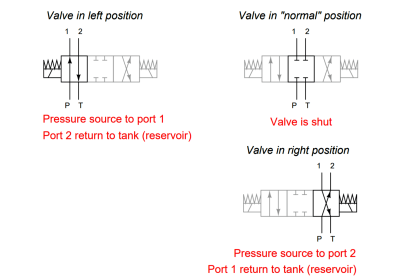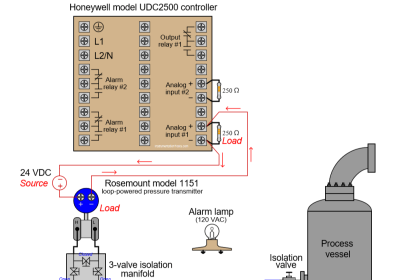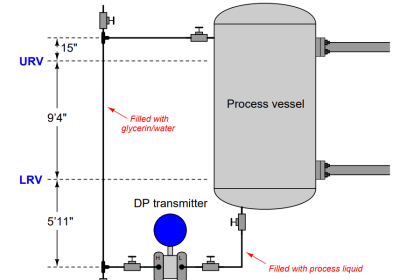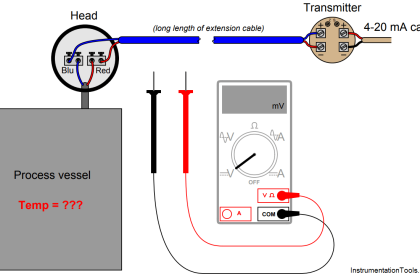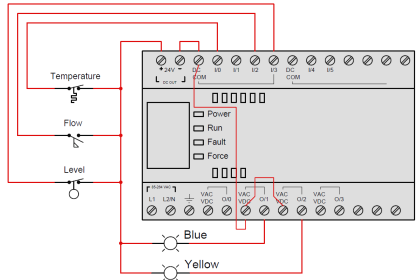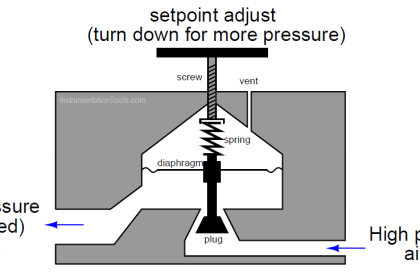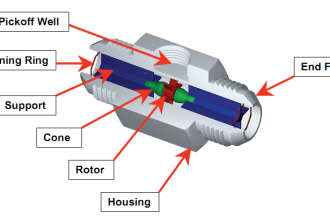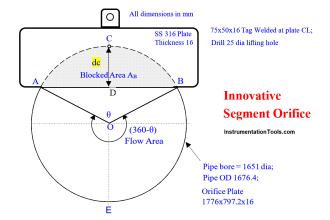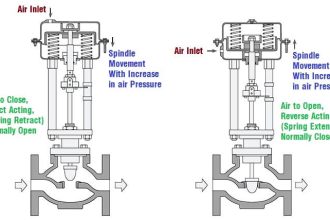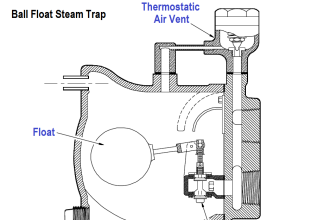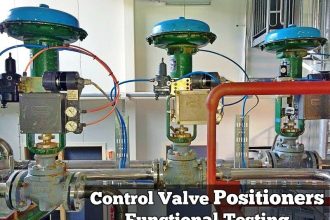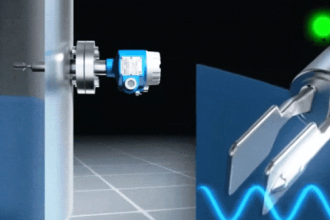Calculate the percentage of incident power reflected back to the transmitter, and the percentage of incident power transmitted (forward) through the liquid in this radar level measurement application:
Radar Level
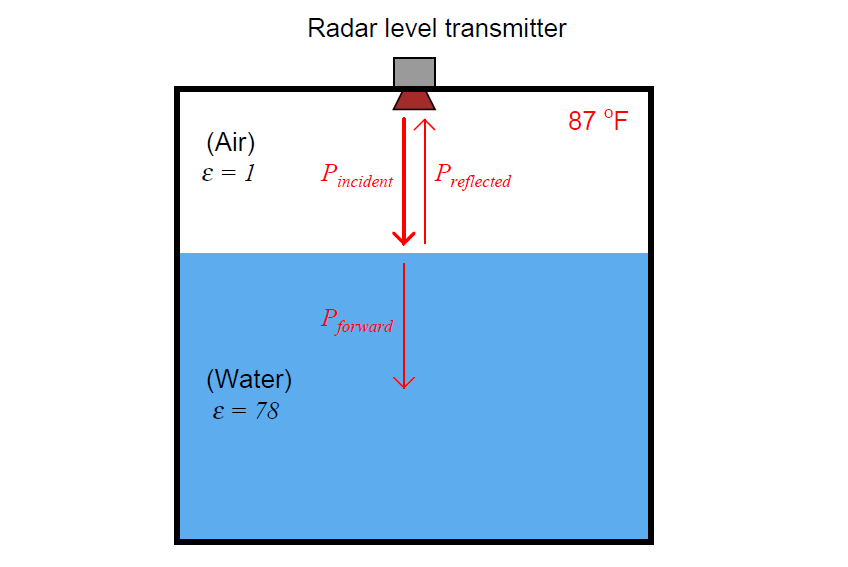
Also, calculate the ullage for this vessel in both units of meters and units of feet/inches, given a reflected pulse (“echo”) time of 11.176 nanoseconds.
Note: the propagation velocity of radio waves in air is approximately 3 × 108 meters per second, the same as the speed of light in a vacuum.
Partial Answer:
Preflected = 63.45%
Ullage = 1.676 meters
More Questions
1. An effective problem-solving technique to apply to the calculation of ullage is to simplify the problem and solve that simplified problem.
In this case, an easy way to “simplify the problem” is to change the numerical values for echo time and speed of light until the solution for ullage becomes obvious even without using a calculator.
Then the formula we must use to calculate any time/speed/ullage echo problem will be apparent. Apply the “simplify the problem” technique to this ullage calculation.
2. Would you say this is an example of good signal reflection, or poor signal reflection? In general terms, what condition(s) make for strong reflected signals for a radar-based level instrument?
Share your answers and explanation with us through the below comments section.
Read Next:
Credits: Tony R. Kuphaldt
